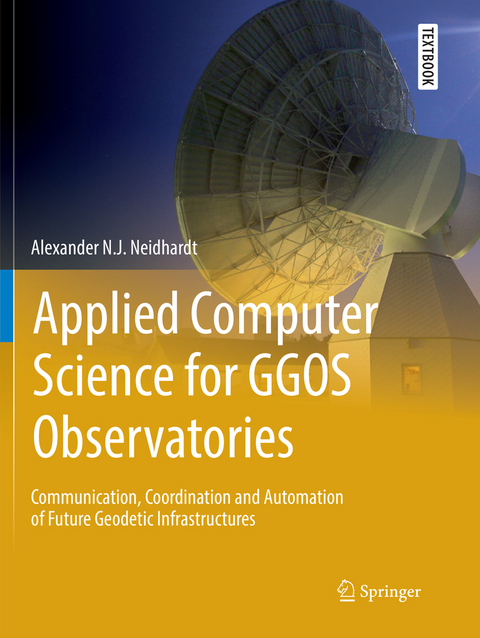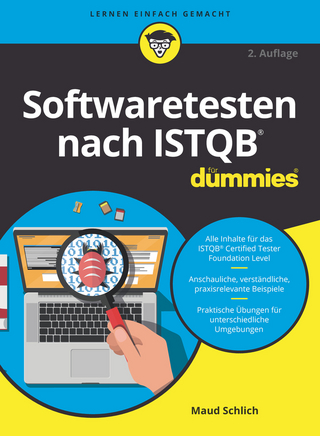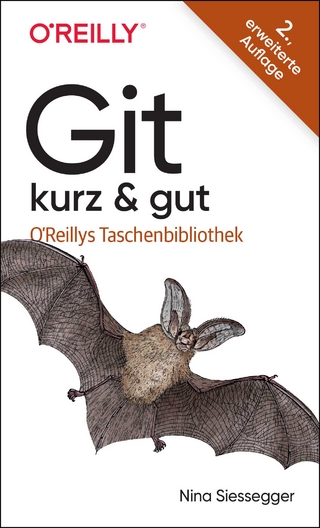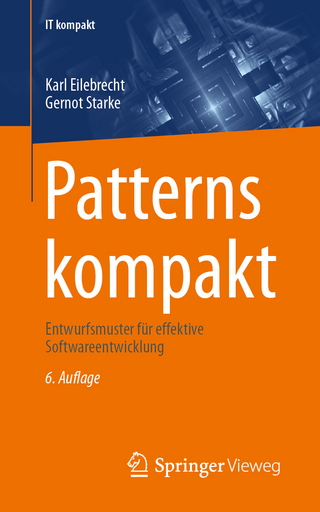
Applied Computer Science for GGOS Observatories
Springer International Publishing (Verlag)
978-3-319-82039-2 (ISBN)
This book combines elementary theory from computer science with real-world challenges in global geodetic observation, based on examples from the Geodetic Observatory Wettzell, Germany. It starts with a step-by-step introduction to developing stable and safe scientific software to run successful software projects. The use of software toolboxes is another essential aspect that leads to the application of generative programming. An example is a generative network middleware that simplifies communication.
One of the book's main focuses is on explaining a potential strategy involving autonomous production cells for space geodetic techniques. The complete software design of a satellite laser ranging system is taken as an example.
Such automated systems are then combined for global interaction using secure communication tunnels for remote access. The network of radio telescopes is used as a reference.
Combined observatories form coordinated multi-agent systems and offer solutions for operational aspects of the Global Geodetic Observing System (GGOS) with regard to "Industry 4.0".
Alexander Neidhardt was born on May the 23rd, 1975, in Bad Koetzting, Germany, as the son of a banker and a seamstress. He grew up in the countryside of the Bavarian forest, a wooded low-mountain region close to the Czech border. His parents supported his interest in technology and his grandfather was the defining person for him, showing the value of applying knowledge as craftsman for woodwork. After his visit of the secondary school and a following education at the specialized secondary school (Fachoberschule) in Cham, Germany, with a focus on technical subjects, he finished as one of the best graduates of the year 1993. After his military service, he studied technical computer science (1994-1998) and got his first diploma degree in applied computer science at the Regensburg technical university of applied sciences in the year 1998. During his studies, he had first contact to geodesy as laser ranging operator and during several internships as programmer at the Wettzell fundamental station. To consolidate his theoretical background, he continued his education in computer science at the Friedrich-Alexander-University of Erlangen-Nuremberg, Germany, with specializations in communication systems, operating systems, image processing and pattern matching, and physics (1998-2001). He graduated with a further diploma degree writing a diploma thesis at the Fraunhofer Institute of Integrated Circuits at Erlangen, Germany, in the field of automatic code generation in combination with hardware and software co-design in the year 2001. To apply for a PhD, he worked as research scientist and software engineer of the Research Facility Satellite Geodesy (Forschungseinrichtung Satellitengeodasie, FESG) of the Technical University of Munich, Germany, at the Geodetic Observatory Wettzell (2001-2005). In 2005, the work resulted in a doctoral thesis about the improvement of the data management of inhomogeneous computer networks of geodetic infrastructures on the basis of middleware and file systems on the example of the Wettzell fundamental station. It was published in the publication series of the Federal Agency for Cartography and Geodesy Frankfurt am Main, Germany, as number 37. He received his Doctorate in Natural Sciences (Dr. rer. nat.) of the Technical University of Munich with the certificate "magna cum laude" and joined the development group of the control system for Wettzell's new, semi-automatic satellite laser ranging system as employee of the research facility satellite geodesy at the Geodetic Observatory Wettzell. Since 2008, he is the head of the radio telescope group at the Wettzell observatory, which is now the group for microwave techniques (VLBI - GNSS - DORIS). He specialized in the development of modern, remotely controllable and autonomous control systems for the instruments of the geodetic space techniques and teaches courses in the field of applied computer science for the international master programs Earth Oriented Space Science and Technology (ESPACE) and Transportation Systems at the Technical University of Munich. In 2016, he finished his thesis to become a private lecturer (associate professor) for applied computer science in geodesy at the Technical University of Munich. During his work at the Geodetic Observatory Wettzell, he joined business trips to the permanent GNSS site Lhasa, Tibet in China, to develop and maintain equipment in 2003 and 2006. He installed hardware at the Transportable Integrated Geodetic Observatory (TIGO) at Concepcion, Chile and was a member of the Antarctic VLBI campaign 01/2008 at the German Antarctic Receiving Station (GARS) O'Higgins, Antarctica, but never reached the station due to technical and logistic problems with the flights to the site. In November 2014, he worked as university associate in the School of Land and Food, School of Mathematics and Physics at the University of Tasmania, Hobart. He regularly teaches at the Technical Operations Workshop at the MIT Haystack Observatory, Westford MA, USA, and in the VLBI Training School of the International VLBI Service for Geodesy and Astrometry (IVS), recently at the Hartebeesthoek Radio Astronomy Observatory, South Africa, in March 2016. Alexander Neidhardt chairs the IVS Task Force on Seamless Auxiliary Data Archives since March 2014, is Vice-Chair of the IVS Working Group on the Observation of satellites using VLBI since October 2014, and chairs the internal Working Group for Coordination, Communication and Automation in the Global Geodetic Observing System (GGOS) Bureau for Networks and Observations (formerly GGOS Bureau for Network and Communications) since 2012. He was divisional head for "New Technologies" in the Consortium for Geodetic Earth system science (CGE) in Munich (2011-2015) and participated as board member to the EU-funded project "Novel EXplorations Pushing Robust e-VLBI Services (NEXPReS)" of the 7th framework program. Because of the strong practical orientation of the Wettzell activities, he is also trained as safety representative, fire safety assistant and in other safety relevant skills. Since 2015, he is married with Anita. Despite the international work and their strong European sense, both remain true to their home and live in the small village Lohberg in the Bavarian forest.
Introduction.- Writing code for Scientific Software.- Using a code toolbox.- Controlling a Laser Ranging System.- Controlling a VLBI system from remote.- Coordination, communication and automation for the GGOS.- A Style Guide for Geodetic Software in C and C++.- Precise telescope mount model parameters based on the least squares method.
| Erscheint lt. Verlag | 3.8.2018 |
|---|---|
| Reihe/Serie | Springer Textbooks in Earth Sciences, Geography and Environment |
| Zusatzinfo | XV, 546 p. 244 illus., 165 illus. in color. |
| Verlagsort | Cham |
| Sprache | englisch |
| Maße | 210 x 279 mm |
| Gewicht | 15194 g |
| Themenwelt | Mathematik / Informatik ► Informatik ► Software Entwicklung |
| Mathematik / Informatik ► Mathematik ► Angewandte Mathematik | |
| Naturwissenschaften ► Geowissenschaften ► Geologie | |
| Naturwissenschaften ► Geowissenschaften ► Geophysik | |
| Schlagworte | Applied Computer Science • Geodesy textbook • Geodetic Observatory Wettzell • Geodetic Software • GGOS • Global Geodetic Observation • Laser Ranging System • Space Geodetic Techniques |
| ISBN-10 | 3-319-82039-7 / 3319820397 |
| ISBN-13 | 978-3-319-82039-2 / 9783319820392 |
| Zustand | Neuware |
| Haben Sie eine Frage zum Produkt? |
aus dem Bereich


